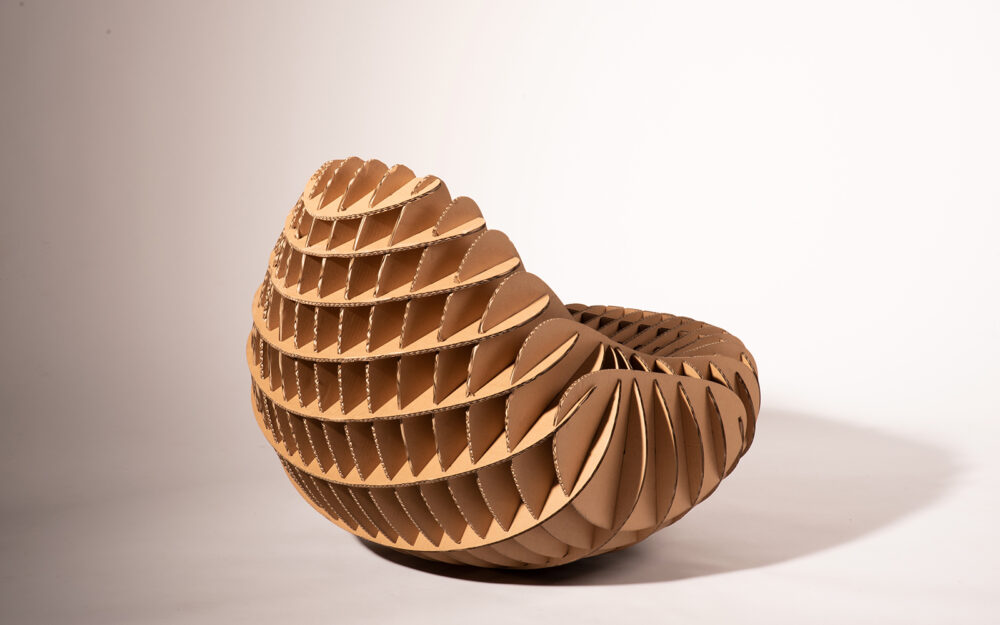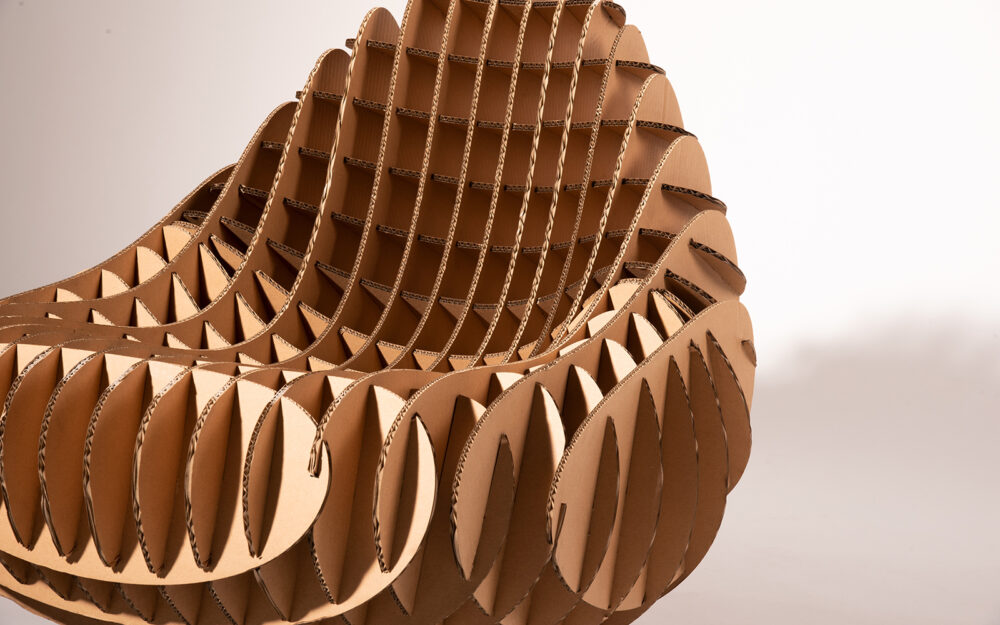Even though we can witness a rapidly growing cultural and political awareness of the unsustainability of today‘s consumer-culture, most commercially available products are still far from proposing viable alternatives to overconsumption and overproduction. One possibility to limit waste and carbon emissions is to make things only when necessary. Novel design and manufacturing tools are paving the path towards on-demand and individualized production, while also opening up new domains for aesthetic and functional exploration.
In this course students had the opportunity to digitally design and manufacture 1:1 eco-friendly furniture prototypes. The designs should be based on what is commonly referred to as a waffle-system and were produced with a laser-cutter from 105,00 cm x 165,00 cm x 6,50 mm sheets of brown corrugated cardboard. Topics to consider were:
– Material efficiency and production workflow
– Assembly and creative experience/involvement of the customer (e.g. IKEA effect)
– Innovative use of design and manufacturing technologies
– Aesthetic (futuristic) appearance and practical usability
Rainbow Chairs
The Rainbow Chair is a minimalist yet practical piece of furniture that’s effortless to assemble and unassuming in its design. The chair features an aesthetically pleasing, rainbow-like structure that optimizes material usage while guaranteeing stability. Among three different assembly methods evaluated, the tilt-insert approach was chosen for its blend of structural integrity and visual appeal. In a display of versatility, two Rainbow Chairs can be joined together to form a small, handy table. When four chairs are combined, they create a harmonious set of tables and chairs, suitable for both professional and leisure settings. The Rainbow Chair embodies the convenience and style of IKEA designs – it’s compact, easy to store, and space-efficient.










